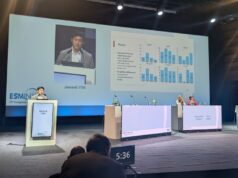
A retrospective analysis of more than 6,600 acute ischaemic stroke patients has revealed that the duration of a mechanical thrombectomy procedure may have a significantly more profound effect on functional outcomes as compared to prehospital delays. The findings of this analysis have been published by Ali Alawieh (Emory University School of Medicine, Atlanta, USA) and colleagues in the Journal of NeuroInterventional Surgery.
“Endovascular thrombectomy has transformed acute ischaemic stroke care, with onset-to-puncture [OTP] time widely recognised as a critical determinant of outcome,” the authors write, outlining the backdrop to their study. “However, emerging evidence suggests that in-hospital procedure time—from arterial puncture to final recanalisation—may have an equally or more significant impact.”
With this in mind, Alawieh et al conducted a retrospective analysis of 6,644 acute ischaemic stroke patients treated via mechanical thrombectomy across 44 global centres within the Stroke Thrombectomy and Aneurysm Registry (STAR) between 2016 and 2023.
In order to evaluate the relative contributions of prehospital OTP time and in-hospital procedure time towards patients’ functional outcomes, the researchers deployed multivariable regression analysis, time-equivalence analysis, and marginal effects modelling, to assess how these timings were associated with 90-day modified Rankin scale (mRS) scores.
Alawieh et al also detail that, in their study, centres were stratified by procedural efficiency and compared using propensity score matching (PSM), while mediation analysis was used to evaluate whether procedure times accounted for inter-centre differences—discrepancies between, for example, comprehensive, thrombectomy-capable and primary stroke centres.
As per the researchers’ findings, OTP and procedural times were both independently associated with functional outcomes across their cohort of stroke patients. However, procedure time was shown to have had a “significantly stronger effect” of the two, demonstrated by an adjusted odds ratio (OR) for an mRS score of 0–2 of 0.56 per hour with procedure time versus 0.96 per hour with OTP time.
According to Alawieh et al, regarding effects on functional outcomes, each five-minute increase in procedure time was found to be equivalent to an increase of 78–100 minutes in additional OTP time.
The authors go on to detail that centres with faster average procedure times ultimately produced higher rates of functional independence—with a number needed to treat (NNT) of 10—as well as fewer complications, and lower symptomatic intracranial haemorrhage rates (ICH). Furthermore, procedure times were shown to have “significantly mediated” the relationship between outcomes and the level of a given stroke centre (p<0.001).
“While minimising OTP remains important, procedure time exerts a greater influence on outcomes after endovascular thrombectomy,” Alawieh et al conclude. “Procedural efficiency should be emphasised in stroke systems of care and included in centre performance metrics to improve patient outcomes.”










